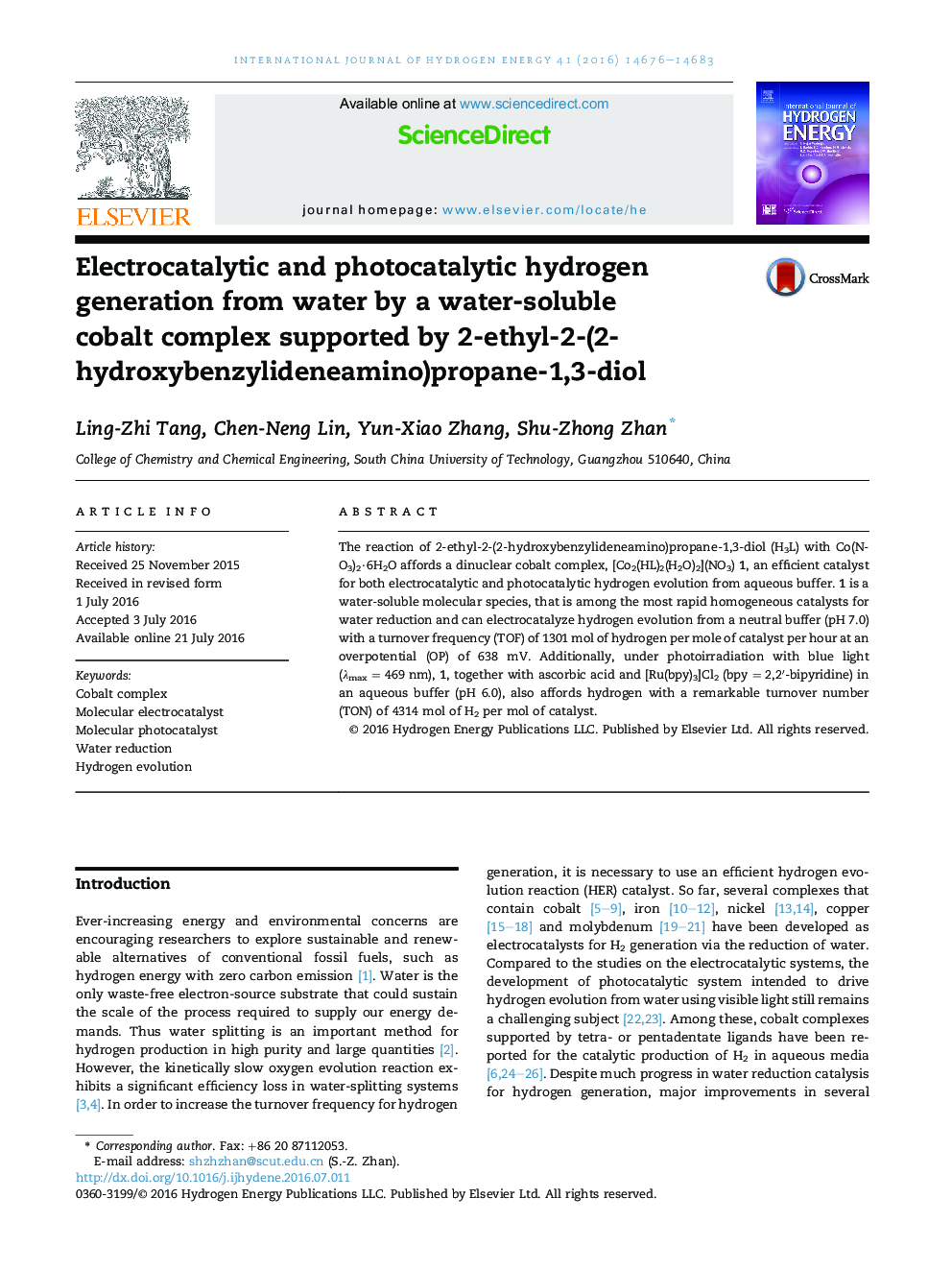| کد مقاله | کد نشریه | سال انتشار | مقاله انگلیسی | نسخه تمام متن |
|---|---|---|---|---|
| 1269344 | 1497392 | 2016 | 8 صفحه PDF | دانلود رایگان |
• Reaction of ligand (H3L) with Co(NO3)2·6H2O affords a cobalt complex, [Co2(HL)2(H2O)2](NO3) 1.
• TOF reaches a maximum of 125.4 mol/h at an overpotential of 991.6 mV (DMF).
• TOF reaches a maximum of 1301 mol/h at an overpotential of 638 mV (pH 7.0).
• In the presence of blue light, 1 produces hydrogen with a TON of 4314 mol of H2 (mol of cat)−1.
The reaction of 2-ethyl-2-(2-hydroxybenzylideneamino)propane-1,3-diol (H3L) with Co(NO3)2·6H2O affords a dinuclear cobalt complex, [Co2(HL)2(H2O)2](NO3) 1, an efficient catalyst for both electrocatalytic and photocatalytic hydrogen evolution from aqueous buffer. 1 is a water-soluble molecular species, that is among the most rapid homogeneous catalysts for water reduction and can electrocatalyze hydrogen evolution from a neutral buffer (pH 7.0) with a turnover frequency (TOF) of 1301 mol of hydrogen per mole of catalyst per hour at an overpotential (OP) of 638 mV. Additionally, under photoirradiation with blue light (λmax = 469 nm), 1, together with ascorbic acid and [Ru(bpy)3]Cl2 (bpy = 2,2′-bipyridine) in an aqueous buffer (pH 6.0), also affords hydrogen with a remarkable turnover number (TON) of 4314 mol of H2 per mol of catalyst.
Figure optionsDownload as PowerPoint slide
Journal: International Journal of Hydrogen Energy - Volume 41, Issue 33, 7 September 2016, Pages 14676–14683
